With the advancement of modern medical technology, dental implants have become a widely used method for restoring lost teeth. They not only effectively restore the function of teeth lost due to cavities, periodontal disease, trauma, or other reasons, but also improve the appearance of the patient, enhance chewing ability, and boost confidence. Compared to traditional dentures and bridges, dental implants offer greater comfort, stability, and long-term effectiveness, which is why they have become increasingly popular in dental treatments.
This article will provide a comprehensive introduction to dental implants, covering their basic concepts, indications, surgical process, implant materials, post-operative care, and common issues. By reading this article, you will gain a thorough understanding of this technique and be better informed when making treatment decisions.
1. Basic Concept of Dental Implants
A dental implant is a procedure where an artificial tooth root, typically made from titanium or other biocompatible materials, is surgically placed into the jawbone, followed by the installation of a dental crown on top. This process aims to restore the function and aesthetics of a missing tooth. Dental implants are designed to mimic the natural teeth and serve as a more permanent solution than traditional dentures or bridges.
The dental implant process typically involves three main stages:
- Implant Placement: The artificial root (implant) is surgically placed into the jawbone.
- Healing and Osseointegration: The implant fuses with the bone over several months to form a stable foundation.
- Crown Placement: A custom-made crown is placed on top of the implant to restore the appearance and function of the missing tooth.
Dental implants not only restore lost tooth function but also help maintain oral health by preventing bone loss that can occur with missing teeth.
2. Indications for Dental Implants
Dental implants are suitable for most patients who have lost teeth due to decay, disease, or trauma. The specific indications for dental implants include:
- Single Tooth Loss: For patients with one missing tooth, a single implant can be placed to replace the missing tooth.
- Multiple Tooth Loss: For patients who have lost several teeth, multiple implants can be used to restore the missing teeth.
- Full-Arch Tooth Loss: For patients who have lost all their teeth in either the upper or lower jaw, implants can be used to restore the entire arch of teeth.
- Patients Who Cannot Wear Traditional Dentures: Some patients may have difficulty wearing traditional dentures due to health or structural issues, and dental implants offer an effective alternative.
2.1 Contraindications for Dental Implants
While most patients are candidates for dental implants, there are certain situations where implants may not be suitable. Common contraindications include:
- Severe Systemic Diseases: Conditions such as uncontrolled diabetes, cancer, or immune disorders that may affect healing and increase the risk of complications.
- Active Oral Health Problems: Conditions like periodontal disease, oral infections, or untreated cavities need to be resolved before implant treatment can proceed.
- Insufficient Bone Volume: If the patient’s jawbone is too thin or weak to support the implant, bone grafting procedures may be required.
- Age: Patients who are very young (whose bones have not fully developed) or very old may not be ideal candidates for implants.
Each patient’s suitability for dental implants is assessed on an individual basis by the dentist, taking into account both oral and general health factors.
3. The Dental Implant Procedure
Dental implant surgery is a precise and specialized procedure, but with proper planning and execution, it has a high success rate. The process typically involves several stages:
3.1 Initial Consultation and Evaluation
Before the implantation, a thorough initial evaluation is required. This includes:
- Oral Examination: The dentist examines the oral cavity to identify any existing oral health issues such as gum disease or infections.
- Radiographic Imaging: X-rays, CT scans, or 3D imaging are used to assess the quality and quantity of the jawbone, which is critical for implant placement.
- Systemic Health Evaluation: The dentist assesses the patient’s overall health to ensure that there are no contraindications for surgery.
3.2 Implant Placement
Once the initial evaluation is complete and the patient is deemed suitable for the procedure, the surgical phase begins. The typical steps are as follows:
- Local Anesthesia: The surgical site is numbed with local anesthesia to prevent pain during the procedure.
- Incision of the Gum: The gum tissue is carefully incised to expose the jawbone.
- Drilling and Implant Placement: A small hole is drilled into the jawbone, and the titanium implant is inserted into the bone.
- Suturing the Gum: The gum tissue is then sutured back over the implant, and the surgical site is closed.
3.3 Healing and Osseointegration
After the implant is placed, it requires several months (usually 3-6 months) to fuse with the bone in a process known as osseointegration. This step is crucial for the long-term stability of the implant. During this period, the patient needs to avoid putting pressure on the implant site. The dentist will schedule follow-up visits to monitor the healing process.
3.4 Crown Placement
Once osseointegration is complete, a custom-made crown is attached to the implant. The dentist ensures that the crown matches the shape, color, and size of the natural teeth to achieve the best aesthetic result. The crown is fixed onto the implant using an abutment, and the restoration is considered complete.

4. Materials Used for Dental Implants
Dental implants and crowns are made from various materials, each offering specific benefits. The main materials used in implants and crowns are:
4.1 Implant Materials
Dental implants are primarily made from the following materials:
- Titanium: Titanium is the most widely used material for implants due to its high biocompatibility, which allows it to fuse securely with the bone. It is strong, resistant to corrosion, and ideal for long-term use.
- Zirconia: Zirconia is a newer material used for implants and is valued for its strength, aesthetic appearance, and biocompatibility. It is especially suitable for patients with cosmetic concerns.
- Ceramic Implants: Ceramic implants are made entirely of biocompatible ceramic materials and are often chosen for their natural appearance, especially in the anterior (front) teeth.
4.2 Crown Materials
Crown materials vary based on the location of the implant and the patient’s aesthetic preferences:
- All-Ceramic Crowns: These crowns closely mimic the appearance of natural teeth and are commonly used for front teeth where aesthetics are a priority.
- Porcelain-Fused-to-Metal Crowns: These crowns combine the strength of metal with the aesthetic qualities of porcelain. They are commonly used for back teeth that experience significant pressure.
- Full-Metal Crowns: Made from gold, platinum, or other metal alloys, full-metal crowns are durable and suitable for molars but lack the aesthetic appeal of porcelain.
5. Post-Operative Care After Dental Implant Surgery
Although dental implants have a high success rate, proper post-operative care is essential to ensure the long-term success of the procedure. Here are some important care guidelines:
5.1 Avoid Hard Foods
After the surgery, patients should avoid chewing hard foods for several weeks to prevent putting pressure on the implant site while it is still healing.
5.2 Regular Follow-Up Appointments
Patients need to schedule follow-up visits to monitor the progress of healing and ensure the implant is integrating properly with the jawbone. These visits typically occur at one month, three months, and six months after surgery.
5.3 Maintain Oral Hygiene
Good oral hygiene is critical for the long-term success of dental implants. Patients should brush their teeth twice daily with a soft-bristled toothbrush and use floss or interdental brushes to clean between the teeth. Using an antimicrobial mouthwash can help reduce plaque buildup.
5.4 Avoid Smoking and Excessive Alcohol
Smoking and excessive alcohol consumption can hinder the healing process and increase the risk of implant failure. It is recommended to avoid these habits, particularly during the initial healing phase.
5.5 Manage Diet
Patients should avoid very hot, cold, or spicy foods immediately after the surgery, as these can irritate the surgical site and delay healing.
6. Common Issues and Solutions with Dental Implants
While dental implants are generally very successful, certain complications may arise. Below are some common issues and their solutions:
6.1 Implant Rejection
Implant rejection is extremely rare, but if it occurs, it can result in implant failure. Symptoms such as persistent pain, swelling, or infection should be reported to the dentist immediately. In most cases, the implant can be replaced after addressing the issue.
6.2 Crown Damage
The dental crown may become damaged or dislodged due to biting on hard objects or improper usage. If this happens, the patient should visit the dentist to repair or replace the crown.
6.3 Gum Inflammation Around the Implant
Gum inflammation or infection around the implant, known as peri-implantitis, can occur if proper oral hygiene is not maintained. Regular check-ups and professional cleanings can help prevent this issue. If inflammation develops, the dentist will treat it promptly to prevent further complications.
7. Conclusion
Dental implants have revolutionized the way we restore missing teeth, offering a stable, functional, and aesthetic solution for patients who have lost teeth. While the process requires careful planning, precision, and post-operative care, the long-term benefits of dental implants, including improved oral
health, appearance, and quality of life, make them an excellent choice for many patients.
This comprehensive guide aims to provide valuable information about dental implants, from the procedure and materials to post-operative care and common problems. By understanding the various aspects of dental implants, patients can make informed decisions about their treatment and enjoy the benefits of a healthy, confident smile for years to come.

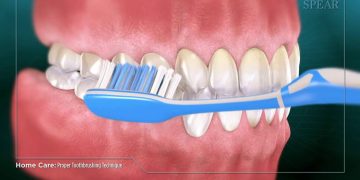
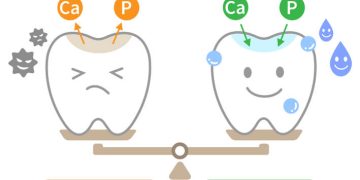





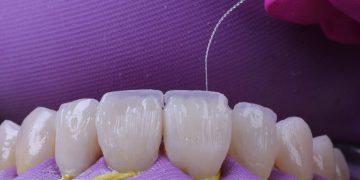
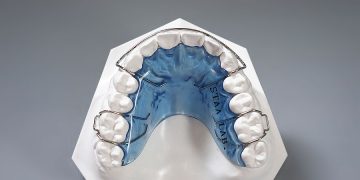

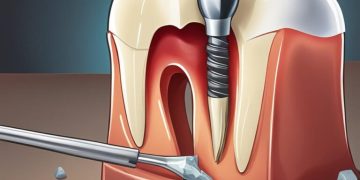



















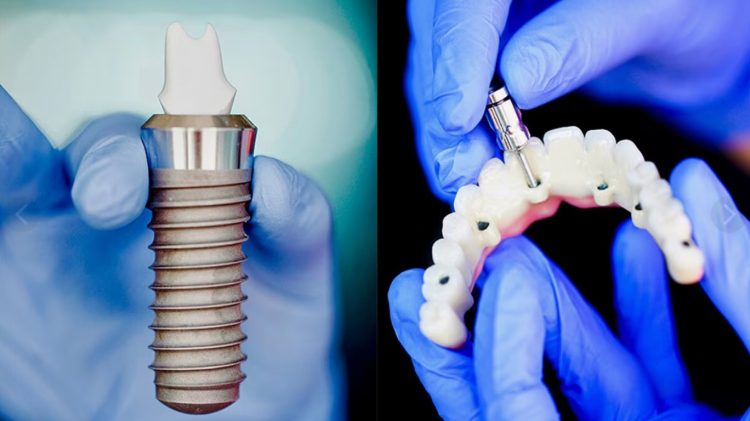













Discussion about this post